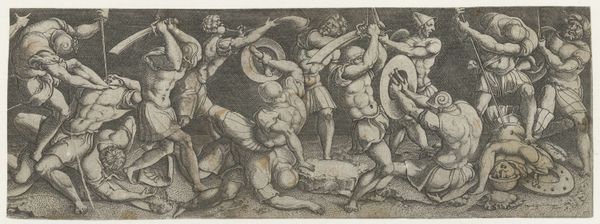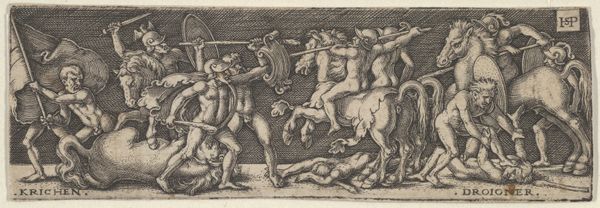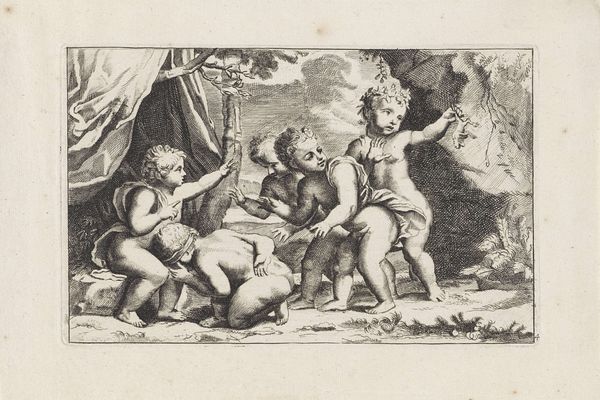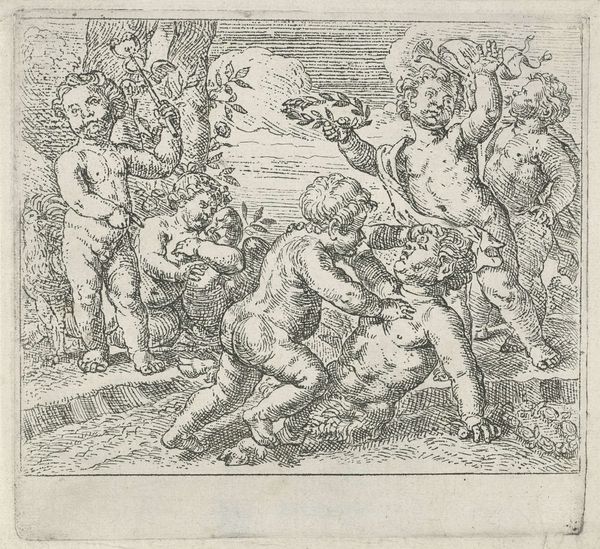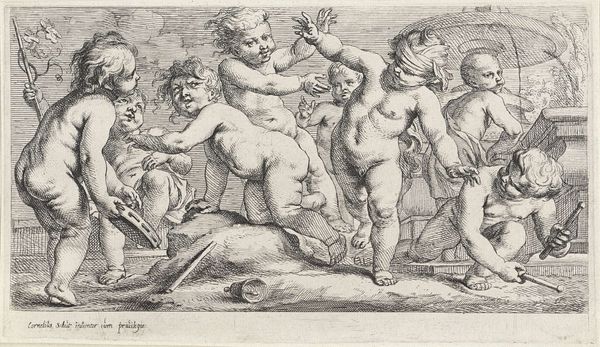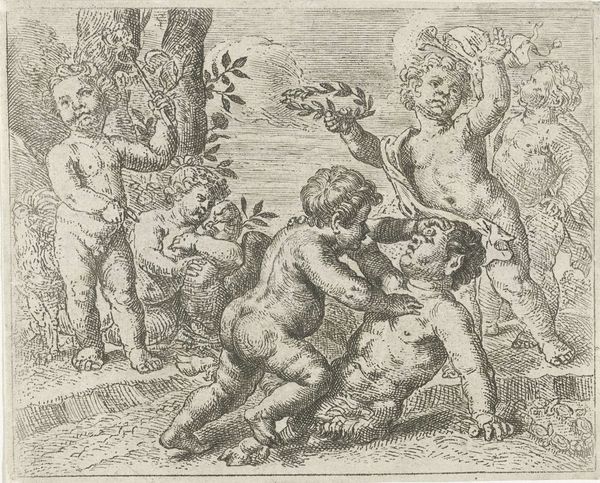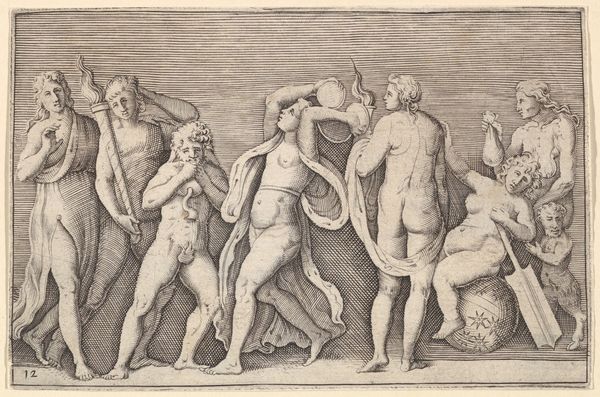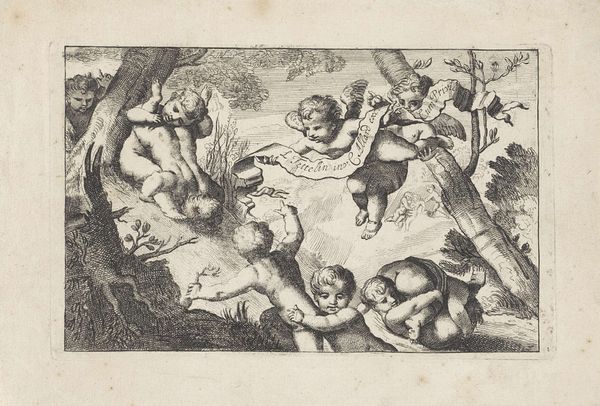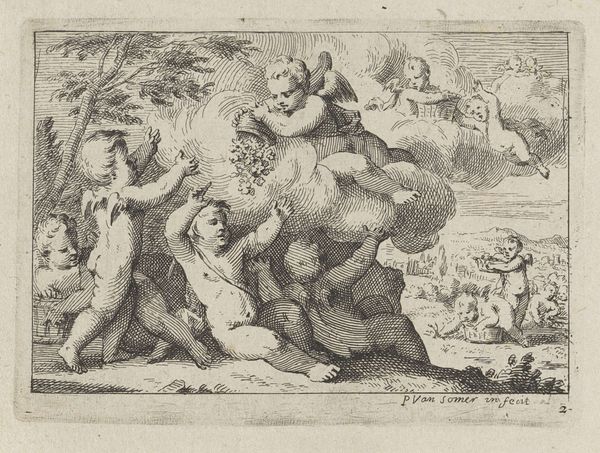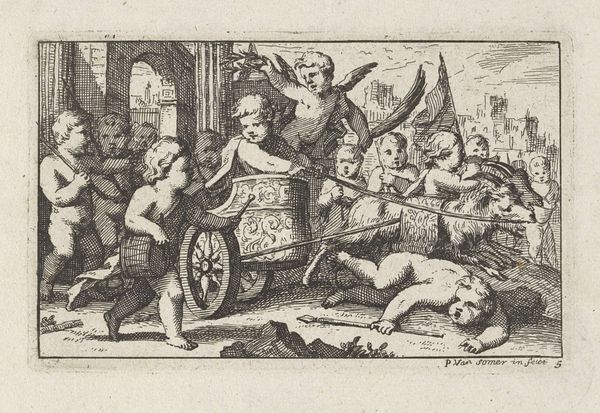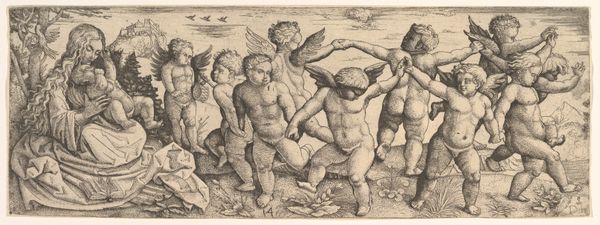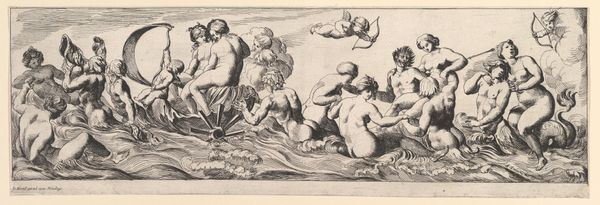
print, engraving
#
baroque
# print
#
figuration
#
pencil drawing
#
genre-painting
#
engraving
Dimensions: height 129 mm, width 220 mm
Copyright: Rijks Museum: Open Domain
Curator: Oh, this print is pure delight! We're looking at "Putti Playing by a Fountain." It's an engraving, likely dating from the late 17th century, though its exact origins remain a bit of a mystery—attributed to an anonymous artist. Editor: It's quite lively. My first thought is of sheer exuberant chaos. There's so much happening—a cluster of these cherubic figures tumbling about. It's incredibly dynamic! Curator: Precisely! Putti, often associated with Cupid, have a long history as symbolic figures. Their depiction here links them, I think, less to strictly divine love, and more toward earthly playfulness—a celebration of youthful innocence in a very particular way, circulated for a burgeoning print market. Editor: Notice the blindfolded putto leading the game? The blindfold carries so much symbolic weight across cultures. Here, I sense it representing the innocence of childhood. Also, is that musical instrument suggesting festive celebration and merrymaking? Curator: It speaks to the social role these images played. Prints like this were increasingly affordable, becoming available to a wider public hungry for representations of both idyllic leisure and perhaps subtle moral lessons embedded within these scenes of childlike amusement. The artistic value might now seem slight, but it circulated amongst, and catered to, an expanding public who enjoyed this kind of artwork. Editor: And the fountain itself? It represents abundance and life-giving energy. A traditional symbol—the vessel spouting water often depicted across ancient art—renews the cyclical view on human nature as abundant, youthful, even innocent. Curator: Absolutely, you see how cultural memory persists. These visual symbols worked on multiple levels. What might seem at face value mere "genre painting" speaks volumes when placed against a larger historical backdrop. This era produced social stratification reflected and catered to by artworks themselves, which reveals as much about those who commissioned or viewed such art. Editor: Thinking of today, with how quickly images are distributed in online social contexts, I can’t help wonder about these echoes. How this enduring appeal of the cherubic figure persists even into modern cartoons and advertisement! Curator: It's remarkable, isn't it? To see these connections bridging centuries. Understanding art in the social framework it emerged helps unravel meanings which initially we cannot see. Editor: It is also enriching to interpret such prints, finding resonance with timeless icons, that continues to echo around us.
Comments
No comments
Be the first to comment and join the conversation on the ultimate creative platform.
